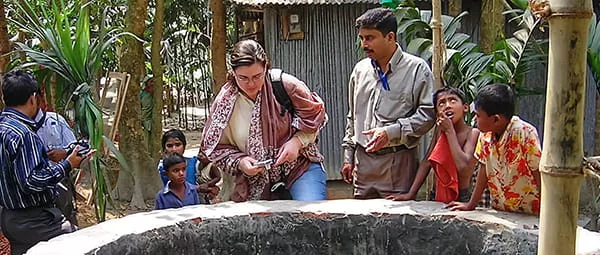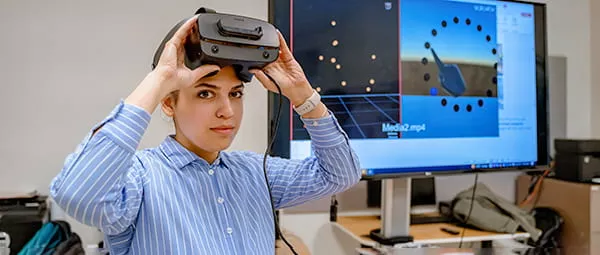Research
Public Health program
College of Health
Engaged in groundbreaking research with local, national, and international impact, our public health faculty members are at the forefront of interdisciplinary research. Explore their ongoing projects and research opportunities through the links provided below to individual projects, programs and labs.
Research Projects, Programs and Labs

ENLACE
The ENLACE program builds solidarity and amplifies youth voices, connecting Latinx and lesbian, gay, bisexual, transgender, queer and questioning youth in fighting social isolation

Environmental Exposure and Biomarker Lab
The Environmental Exposure and Biomarker Lab measures metal concentrations in environmental and biological samples in order to determine personal exposure to contaminants. We also examine molecular biomarkers that may be generated by exposure to environmental contaminants.

Environmental Health Literacy and Translation Lab
The Environmental Health Literacy and Translation Lab evaluates the role of environmental health literacy in helping communities better frame and respond to environmental health hazards. Current projects incorporate disaster research, asthma and air pollution, and Indigenous environmental health.

Health and Healthcare Outcomes Research Program
The Health and Healthcare Outcomes Research Program carries out research related to evaluation and innovation in health care to improve health outcomes (i.e., access, quality of life, satisfaction, health related social needs, costs) for people with specific chronic conditions. Health policy implications of these outcomes are a key focus.

Health Care Workforce Needs Assessment
The Health Care Workforce Needs Assessment provides insights into health care workforce needs in communities across Oregon as well as general guidance on how to expand and diversify the health care workforce to meet the needs of patients and communities throughout Oregon and eliminate health inequities.

Methylmercury Lab
The Methylmercury Lab carries out research related to methylmercury cycling and exposure.

Occupational Ergonomics and Biomechanics Laboratory
The Occupational Ergonomics and Biomechanics Laboratory uses a variety of bioinstrumentation to characterize work-related physical exposures and investigate their relationships with adverse health outcomes with an ultimate goal of promoting health and well-being at workplaces.

Occupational Safety and Health Laboratory
The Occupational Safety and Health Laboratory uses a variety of tools and methods to investigate workplace hazards and environmental pollutants on safety and health outcomes in working populations and communities.

Sexual and Reproductive Health Equity Consortium
The Sexual and Reproductive Health Equity Consortium generates, supports, and disseminates research that improves understanding of the diverse factors affecting sexual and reproductive health equity.

Spatial Health Laboratory
The Spatial Health Laboratory carries out diverse research related to health and place.

The State of Nursing Facilities in Oregon
The State of Nursing Facilities in Oregon produces an annual report that informs stakeholders, the Legislature, and the public about skilled nursing facilities (SNFs) in Oregon.

Transforming Academia for Equity
The Transforming Academia for Equity redresses the historical and present-day impacts of colonialism, racism, and other forms of oppression that permeate our society.

Thriving After Cancer Team
The Thriving After Cancer Team aims to fill the gap in supportive care for young cancer survivors, couples struggling with reproductive and sexual health concerns, and LGBTQ+ survivors and their partners/support networks.

Uplift: A Research and Reproductive Equity Laboratory
The Uplift Lab explores the ways community-led research, population data science, and ethnography can combine to imagine and implement more equitable reproductive futures.
Recent publications
(This is not an exhaustive list. We are still rebuilding our database of faculty publications. Visit individual faculty profiles for more extensive lists of their publications.)